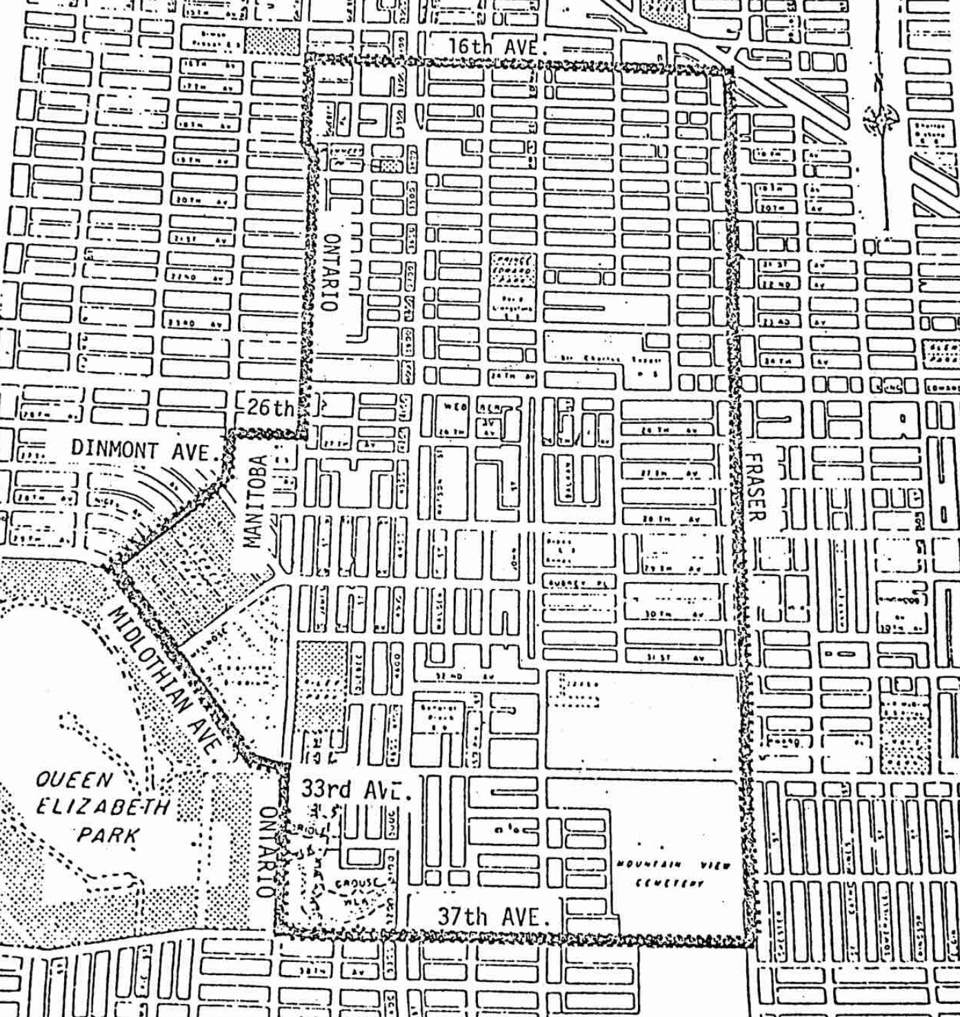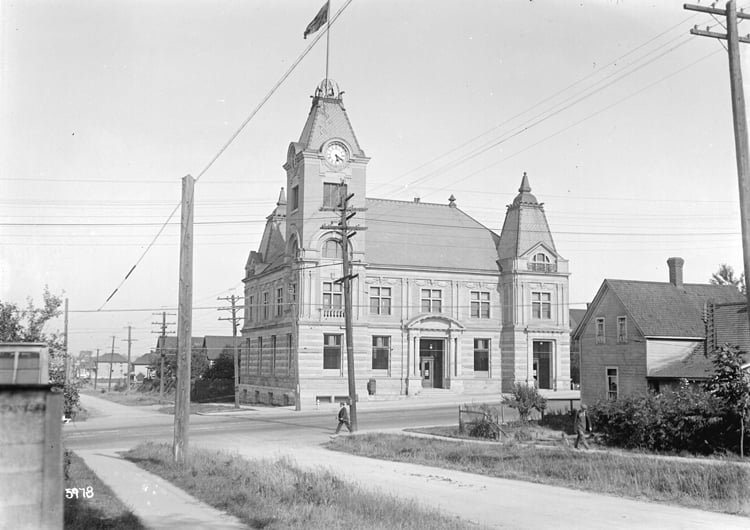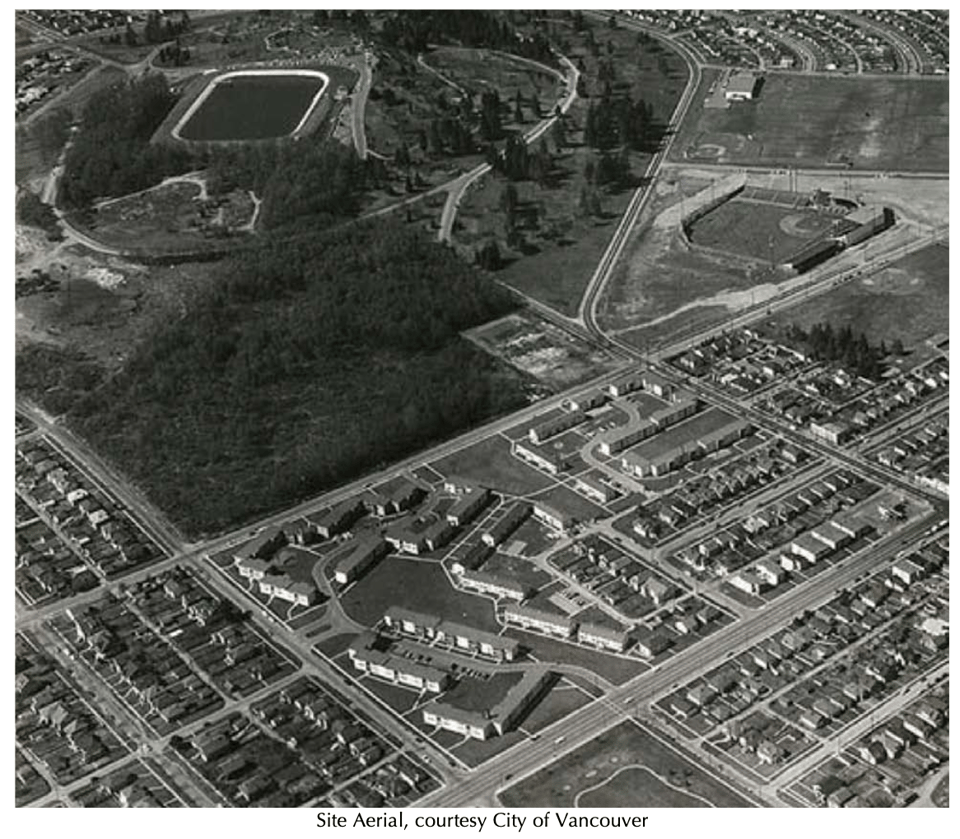What is Riley Park? (+Little Free Blockbuster and PlayScape Cafe)
Hello friends!
This is the very first issue of The Riley Park Newsletter! My name is Christine and I am a historian who moved into this neighbourhood in 2021. I’ve only lived here a very short time but I’ve been so impressed with the community spirit of the area. I wanted to contribute to it, in a small way.
In this newsletter, I’m going to talk a bit about the Riley Park neighbourhood: what is it? what’s the basic timeline of its history? Then there are two other articles. For the first, I interviewed a neighbour who runs a “Little Free Blockbuster” box where you can borrow free DVDs. For the second, I interviewed Josh and Talia Bender, the couple who recently opened up the PlayScape Cafe at 33rd and Main.
Please let me know about any Riley Park-centred topics that you’d like to hear about in the future or if you’d like to get on my list of business owners/neighbours to interview!
Enjoy!
What actually is the “Riley Park” neighbourhood?
Recently, a friend—who is a longtime Vancouverite and a resident of Riley Park—commented that she didn’t feel like Riley Park had the same kind of “identity” as other neighbourhoods in the city.
The name has been around for awhile. It dates back to 1929. What "Riley Park” means as a neighbourhood is more contested. Many definitions follow this map from the late ‘70s, which defines Riley Park as as the rectangle bordered by Ontario to Fraser and 16th and 37th avenues, although today you will sometimes see it defined as the area between 16th and 41st and Fraser to Cambie. I talked to a lot of people who were shocked that the definition went as far north as 16th, with many considering the northern boundary to be King Ed.

These kinds of definitions can be hard to agree on, so I’m not expecting everyone to have the same idea of “Riley Park.” We can all have a friendly fight about in the facebook group.
How did Riley Park develop and grow?
Once we get past the fact that First Nations people have been living in this region for about 10,000 years, the first European settlement in what is now Vancouver was built in 1862. Our neighbourhood was NOT part of Vancouver until 1929. Before that, we were in a separate city: the Municipality of South Vancouver, incorporated in 1892. We can’t properly call the neighbourhood “Riley Park” until 1929, but I’ll be using the term before then to keep things simple.
The oldest existing features of our neighbourhood today are probably Mountain View Cemetery and Queen Elizabeth Park.
Mountain View Cemetery predates the settlement of Riley Park. It was opened by the City of Vancouver in 1886, with its first burial in 1887.
Queen Elizabeth Park wasn’t dedicated until 1939 (with the Bloedel Conservatory added in 1969). But the area around the park, known as “Little Mountain,” was originally a dense old growth forest. It was first settled by Europeans around 1893, when settlers began logging the area. Little Mountain itself was owned by the Canada-Pacific Railway Company; they mined the basalt that became the foundation rock for many of Vancouver’s early roads. The quarry closed in 1911, but the area had become populated by quarry workers and their families.
South Vancouver began building streetcars and rail systems in the 1890s to help South Vancouverites get into Vancouver. The Brock School, at 4860 Main Street, was built in the very early 1900s.

Better public transportation led to more building. In 1909, North Arm Road (now: Fraser) got a streetcar running north-south to connect to the New Westminster Interurban Line (which ran along present-day Vanness Ave). Bodwell Road (now: 33rd) had a streetcar line, called the Mountain View Line, connecting Granville to Fraser.
By 1911, the area had its first post office and Main Street was lined with shops.


The site of the future Nat Bailey Stadium hosted a ball park known as “Athletic Park” that opened in 1913. In its first game, the Vancouver Beavers defeated the Tacoma Tigers 8–4. A 1945 stadium fire led to the building of the new Capilano Stadium in 1951. (It was renamed for Nat Bailey in 1978.)
The park that we know as “Riley Park” was once a small, six acre farm. In 1929, when the two cities of Vancouver and South Vancouver joined into one city, Riley Park was created, named after the former clerk of the city of South Vancouver, Clark Riley. (I have not been able to find out more information about Clark Riley or why he was chosen as the namesake of the park. If you know—please email me!)
Traditionally, Riley Park was a working class neighbourhood. In the 1930s, 40s, and 50s, the neighbourhood welcomed many immigrants as well.
The City of Vancouver built the Little Mountain Housing site, “the first large-scale modern social housing project in Vancouver,” in 1954. (Today, this is the area where Holborn has built their presentation centre and has been promising to build 284 units of social housing since about 2008.)

Not everyone was happy with the changes in the neighbourhood. An article from the late 1970s blamed unwelcome changes on immigrants and cars:
Then came an influx of new immigrants and the apartments, cars, and television culture of the 1950’s. As Vancouver grew, the boundaries of Riley Park gradually blurred and the community feeling faded, leaving a shabby inner-city neighbourhood with decaying houses and substandard municipal services.
But, in 1976, Riley Park got a 1.9 million dollar grant for a “Neighbourhood Improvement Program,” with the goal of building a neighbourhood house, bringing more people to the Stadium, and making a whole list of other improvements.
EXPO ‘86 transformed Vancouver and our neighbourhood saw even more changes in time for the 2010 Winter Olympics: Hillcrest was built to host the curling events and then converted into the recreation centre that we know today.
Today, this is how the city describes our neighbourhood:
The area has two thriving hubs of unique boutiques, grocers, and restaurants: along Main Street and along Cambie Street. Shops on Main are also known for locally-designed clothing and antique furniture.
I’ve skipped a lot of our neighbourhood history in this short summary (and for sure missed some things that some of you think are important!). We’re now in another period of development and change for the neighbourhood. Please let me know what you’re curious about or interested in for future newsletters!
I’m also ready to collect oral histories: if you or someone you know has lived in this neighbourhood for a long time, please reach out!
Learning about your community through art: the Little Free Blockbuster Box on 23rd and Ontario
If you’re walking south down Ontario toward the mountains and take a right on 23rd, you may notice a blue box: a “Free Blockbuster” inviting you to ‘take a movie or leave a movie’. Its address is 30 East 23rd Ave and I interviewed its custodian about what the free blockbuster movement is about, why they decided to start a box like this, and what it’s meant to maintain the box after a year of doing it.

The custodian is a big fan of libraries and an avid member of their local Buy Nothing group (Riley Park South), but wishes to remain semi-anonymous in the interest of centring the box itself, rather than the keeper of the box.
We’re all familiar with the little free library concept. The first Little Free Library was built in 2009 in Wisconsin and now, LittleFreeLibrary.org, a registered non-profit, reports that they have more than 150,000 registered little free libraries in more than 120 countries worldwide. So a Little Free Library but for movies—Free Blockbuster—is instantly understandable.
The sharing economy, including things like free libraries and Buy Nothing groups, is about reducing consumption and building community. Our Riley Park Free Blockbuster is a popular site for conversations between neighbours. According to its custodian, there are frequent “photoshoots” in front of it and they regularly overhear conversations between parents and kids (“Mom, what’s a DVD?”) and between neighbour and neighbour (“Wait, you’ve never seen ‘Blue Velvet’ — it’s a cult classic!”).
In an era of streaming, a Free Blockbuster can seem niche. And part of its appeal is about nostalgia and kitsch. But, according to its custodian, it’s also very practical. Some people don’t want to stream or cannot afford to subscribe to the ever-increasing number of services. Some people have poor wifi in their homes or have difficulty navigating streaming technology. There are, perhaps, too many streaming services and some people want to take more control over their consumption. Most DVDs also have ‘extras’ that you don’t get with a streaming service, like directors cuts, extended cuts, commentary tracks, and behind the scenes extras.
The glory of the neighbourhood Free Blockbuster is that you have a chance to get to know your community through art. It provides you with a movie collection that has been curated by your neighbours, not an algorithm. For the custodian, that’s enough of a reason to run the box.
If you’re interested in starting your own box, you can go to Freeblockbuster.org, the online hub of the movement. They can tell you how to find your own abandoned newspaper box to repurpose along with other tips on practical matters. The custodian of the box on 23rd suggests getting your community involved right from the start: ask neighbourhood FB groups of anyone knows of an abandoned newspaper box. You can borrow a dolly to move it and an orbital sander to prep for painting. You can fill your box with a call to your local BN community. Many people have DVDs that they love but they’re looking for permission to get rid of them — they’re thrilled to pass them along, knowing that they’ll have a new home where they’ll be appreciated.
You can find the Riley Park Little Free Blockbuster box on instagram @freeblockbustervancouver, where all new movies get posted. If you’re interested in making a donation but you are physically unable to deliver the DVDs or, if you have a large donation that might not fit in the box, you are more than welcome to reach out via Instagram DMs to “Basil,” the keeper of the box, to coordinate a pickup.
They also invite everyone to visit the box in person at 30 East 23rd Ave and have a browse!
Community Business Spotlight: PlayScape Cafe

On the corner of Main and 33rd, there’s a new business with a brand new concept: the PlayScape Café, owned by Josh and Talia Bender. The idea is to create a place where kids 6 and under can play while their adults hang out or work. (Adults without kids are also totally welcome to come in for coffee and snacks–no kid needed!)
Talia and Josh, who opened the PlayScape Café in late March 2024, both grew up in Vancouver and currently live in Riley Park near 23rd and Ontario.
Josh’s background is in sales and marketing for sports. Talia works in philanthropy. They have three kids of their own, ages five, eight, and fourteen. For several years, when the kids were younger, they lived in several cities in the US for Josh’s work. They didn’t know a lot of people in those cities and, as a young family, they were looking for support and community.
When they lived in Los Angeles, they discovered something like PlayScape—a cafe-style play space where parents could bring their kids—and when they moved back to Vancouver, they wanted to recreate that kind of space here in their hometown. Vancouver is a great city, but not everyone has the space in their homes for kids to play and romp, especially when it is tough to get outside on our rainy days. They wanted to create a place for adults and kids to get together, hang out, and find community.
The building where they’re located has not been in Riley Park for long. It was built in 2012 and housed “Duffin’s Donuts” before they moved to their location at Knight and 41st. For awhile, there was a Rexall Pharmacy in the space, but it had been vacant for some time before PlayScape moved in.
PlayScape Café is a lovely space featuring fresh grass green paint that feels welcoming and soothing. Josh stresses that PlayScape is not only for kids!
When you walk in, there is a counter on the left where you can order coffee and espresso, smoothies, and a variety of snacks, including vegan baked goods produced by the Vancouver-owned brand “To Live For.” A cafe-style section featuring tables where adults can work or gather takes up the left side of the space and, on the right, is a semi-enclosed kids space.
The kid space is designed for the littles (under 6). It features several play structures, an interactive floor projector, and plenty of toys. The space is designed so adults working in the cafe can keep an eye on their kids no matter where they end up in the play zone. They also had their bathrooms designed with kids and parents in mind: one stall features two toilets—one that’s ‘kid sized’ for smaller bums.
The space itself is flexible: it has a back room designed for birthday parties, but which will also be available for rent for meetings and events after 4pm.
Thank you for reading! Please let me know about any Riley Park-centred topics that you’d like to hear about in the future or if you’d like to get on my list of business owners to interview!
More about me, if you’re curious.